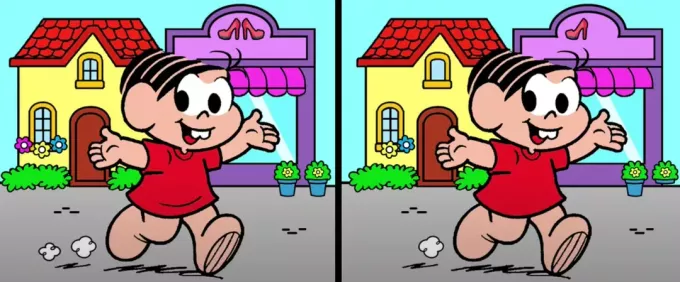
You 7 mistakes games are excellent ways to challenge ourselves and test our ability to concentrate. In order to find some hidden details between two images arranged in parallel, they can even require a lot of analysis time to find the answers. Today, you must find the errors hidden in these Turma da Mônica illustrations in less than 1 minute.
Read more: Game finding errors can be very efficient for the brain; test now
see more
These are the 4 zodiac signs that love solitude the most, according to…
There are some dog breeds considered perfect for people…
These images may even seem identical at first, but the truth is that with a little more attention, it becomes clear that they have some differences. Through these assessments, you can work with essential points for the functioning of the brain and that can be applied in several other areas of life, such as attention to detail, concentration etc. Because of this, these illustrations are widely used in schools, as they help children to work on their reasoning.

Through the game of the 7 errors of Turma da Mônica, which was initially released by “Animated Quiz” channel on YouTube, thousands of users are debating where the differences are. In the comments, it is possible to observe people helping each other, while others indicate that they found even more details than they should, that is, surpassing the 7 errors. But if you can't find the answer, don't worry, this game can actually be a bit more difficult.
Fortunately, it is possible to find the answers on the channel where it was made available, where the videos carefully point out where each solution is found. In addition, it is possible to find several other illustrations with the same purpose on the platform to work your skills and leave your brain “tuned”.
During childhood, it is very likely that in school books you have already gone through some pages that have 7 errors games. That's because these challenges are excellent for exercising different areas of our brain at the same time, so they end up becoming good options for a child's development. To get the idea, they help to stimulate the occipital lobe when it identifies the objects we are looking for.
At the same time, these challenges also work the parietal lobe, which is responsible for analyzing the spatial relationships between the objects we are looking at.

